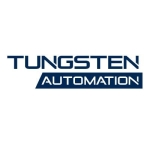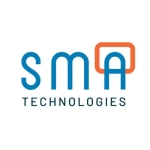What is our primary use case?
We are using unattended bots, Orchestrator, and Studio.
We use this solution for doing a variety of things. It includes a lot of back-office finance and accounting, tax, and a little bit on our operations side. We're also using it for some test automation within our IT group, so helping to test our points of sale, and some of our data transfers as well.
Orchestrator runs on a dedicated server, but our bots all run on virtual dedicated machines in our data center. There were some challenges in setting everything up to run in a virtual environment. We implemented a couple of years ago, so I think that it has improved by now, although it was challenging.
Part of it was on our end, where our people were not familiar with it. The challenges included picking the right type of VM to run on, having the right kind of setup, and having the environment configured correctly. We needed this to allow the RPA team to have enough control over the day-to-day maintenance, and not have bottlenecks with the technical side. Managing things when we had issues or needed to add something new was also a challenge.
The documentation was kind of broad and didn't go into the detail that we wanted it to, although I have seen that get better, so that is really good. I'm sure if we were trying to implement it today, it would probably be a lot smoother with the tools that they've come up with.
With respect to how easy it is to automate our company's processes, on a scale of one to five, I would rate this solution a four. I think there are still a few things they could do and it looks like they are working towards that. It still requires a good bit of training and ramping up for someone brand new to it, especially without a programming background, to jump in and start building. I think they can continue to refine that and they definitely are moving in the right direction. It's a little bit of a technical hurdle to overcome to be able to build not only just basic automations but enterprise-scale automations and automations that are reliable and can check up on themselves. I think they can work some more of that into the actual tool because we've had to do a lot of figuring out how to build best practices and how to program it directly, and the best way to be able to allow us to support it cleanly through the lifecycle. It is good, but there are some things they can add in to truly make it a five. My standards are pretty high, but I'm sure they'll get there.
On a scale of one to five, judging how beneficial it is, I would rate the training a five. We are big fans of it. I typically don't get the luxury of hiring people with technical backgrounds. We usually have people coming out of school or people transferring from other departments who are interested in RPA. So, the Academy tools have been a lifesaver for us and they've been very good, especially for the RPA developer track. It is very detailed and we can really get someone through that training and feel like they're at least able to perform the basic functions of the tool pretty well. From there it is up to us in terms of getting them familiar with our best practices and how we program things and get some hands-on training with the more senior RPA developer to learn some further tips and tricks. Overall, I'm very pleased with the Academy offerings and they're one of the best I've seen from many of them.
From the point that we purchased our UiPath license until we had our first robot was perhaps a month or two. It did not take long, and that included time for training. When we started off, we bought the software, went through the training as a team, and then started building a few small things. We probably had the first one in production within two months of buying the software.
How has it helped my organization?
We have seen a lot of improvements to our organization.
We have one that was a really high-visibility project, where it was kind of a data entry thing that all of our retail managers were spending time on. The data was fed through to a vendor that we franchise through, and they were spending an hour or two a week across hundreds of locations.
We took that into the back office and got data feeds for all the data they were putting in, and then had a bot go through to the current system of reporting, and enter that data for every single store location. We were able to free up those managers with a bunch of time. It was about 5,500 hours a year.
In terms of eliminating human errors, I can say that it has happened but it is difficult to approximate by how much. This is in part because we have a wide variety of software of processes that we've implemented. So, in some, it's definitely higher than others. On the whole, it's been good and it's been helpful, for sure.
What is most valuable?
A lot of the value from this solution comes from Studio and the activities. They really enable us to make things happen accurately, with the clicks and the types they support. Of all the automation tools I've tried or used, they seem to be the most accurate and most consistent.
The Orchestrator management tools are growing a lot and are constantly improving.
What needs improvement?
I would like to see more interconnectedness of everything, including making the APIs a little easier to use, and having bots be able to call other bots and get them to start things. Having all of this a little more seamless would be really helpful.
I would like to see more seamless AI functionality built in to allow teams without data scientists or strong data people to be able to build and deploy simple models that will help enhance their bots further and let them do more.
The technical support is a bit of a weak point for this solution, and ideally, they can improve turnaround time so that we don't have to figure things out ourselves as often.
For how long have I used the solution?
We have been using this solution for a couple of years.
What do I think about the stability of the solution?
With respect to the stability, on a scale from one to five, I would rate this solution a four.
We've had some issues with stability, and I've talked to a lot of other companies who've had maybe more issues than us. It concerns ongoing support and the issues with bots not performing as expected or doing unexpected things as well. The problem is running into unexpected issues that can result from things that are not very readily apparent on the surface. This can be caused by underlying configuration differences in Windows, or patches that have happened, that sort of thing. It's still a challenge to manage and we often have bots that don't seem to have the issues when we are troubleshooting.
Sometimes it is our fault because we're not programming in enough breaks or logging enough to really track what's going on. It seems very dependent on the underlying operating system and things like update states of office applications. Occasionally, it'll just get stuck or hung up and we can't really figure out why, and that's frustrating. It definitely takes people time to go in and resolve those issues and figure it out.
It just seems like there's a lot of times where we just rerun the bot and then it works fine. I find it odd that it would stop at one point and then you just rerun it again and it works. A lot of those are, I will admit, due to input data issues or the system going down, or a website not being available or loading too slowly when it checks. However, I would like to see them continue to focus on stability as a platform, to avoid those as much as possible any issue.
What do I think about the scalability of the solution?
My team that I work with directly is probably about ten people in total. There are a couple of other teams who are working more on test automation that are kind of separate and that's probably a total of about five other people right now, and we're looking to expand to another couple of teams. That will probably be about five more people within the next year, and then my team is growing. We're looking to add a few more people next year as well.
I am the automation lead, and the users are RPA developers and business analysts.
How are customer service and technical support?
When it comes to the technical support for this solution, I feel that it may be a little bit of a weak point. When we reached out to customer support, we haven't gotten a ton of help, or it takes them quite a while to dig through the issue. It is understandable because they're going through someone else's code essentially, to try to resolve an issue. So, usually, we end up relying on internal people, more senior developers.
Sometimes it's just a matter of rerunning it or changing some input parameters and then trying it again, which is not the cleanest troubleshooting by any means. The problem is we felt like we had to, given the slow turnaround time on their support desk. We've kind of had to have the internal ability to figure things out.
Overall, I would rate their technical support a three out of five.
I know that they're a growing company and that they have a lot of new people. It seems like we've maybe had some bad luck in terms of the people that we've been in contact with when we've reached out. Perhaps they were new and maybe not fully understanding. There have been times we've reached out to support where we feel like we know the system better than they do, and that's frustrating. Again, that's why we've had to focus on internal knowledge building, which is a strength of theirs, through the training offered.
We do have a CSM assigned to us who I work with and he's somewhat spotty at times. I think he has a lot on his plate. So, at times we have questions that take a while to get answered.
Which solution did I use previously and why did I switch?
We did a proof of concept that was driven by a consulting company and it was not a success. After that, we decided to implement an in-house solution using UiPath and from there it was successful.
We began with RPA because our management was interested in the potential and in trying it out. Even though the PoC failed, I think there was a promise with the software that we were able to see, so we made the purchase and dove into it. Obviously, it has been successful.
How was the initial setup?
Installing the software itself, the Studio, most of the elements of the licensing and that sort of thing, were all very straightforward, which is great. I would say that the technical side, regarding the virtual machines, took a while in terms of setting up accounts and getting all the VM stuff figured out. All of that took a little bit longer than we expected before we had a stable platform. I think that there could've been some more resources available there, which I think they've partially fixed by now.
What was our ROI?
We were calculating our savings and our estimate is that in a little under a year, perhaps as little as six months, we probably earned back the amounts that we had paid for the platform for a year. Even into the journey, we felt like we had broken even and were making more money on top of that. ROI was very fast.
What's my experience with pricing, setup cost, and licensing?
I can estimate our licensing costs are approximately $100,000 USD per year.
Which other solutions did I evaluate?
In addition to UiPath, we evaluated Automation Anywhere and Blue Prism.
My main reason for selecting UiPath, I think, was the strategy of focusing on a very open platform and allowing anyone to try out the trial, and allowing anyone to register for the Academy. I'm really focusing on democratizing RPA and making it available to everyone. It was a big focus for me because the other two had very closed-off systems and while they were able to give us demos, we didn't really get as good of a feel for how the software works as we did with UiPath where we could just download it and try it.
Also, we just had very good experiences with the salespeople and the people who demoed the product. They were very positive and very excited about RPA, and kind of matched what we were looking for. We felt like it was a much better fit for us, focusing on easy to use automation, not as much on code security like Blue Prism, and Automation Anywhere didn't seem to have a clear strategy for what they wanted to do moving forward.
Ultimately, UiPath has been a successful choice, and I feel that they have continued to grow their lead on the competition.
What other advice do I have?
I really liked a lot of the things I see coming in terms of the future improvements for Orchestrator. I think it's going to continue to grow into a true kind of Cloud Platform for end-to-end automation, whereas right now, it's a little more focused just on building things in Studio, and then managing monitoring them in Orchestrator. So, I'm excited about some of the further integration with the dashboards and everything for managing how it works.
Upcoming is better management of projects from end to end. I've built a lot of things myself to keep up with that. But having UiPath support, a lot of that, a little bit better, it's improved. This is including the focus on the process mining and the design phase, and it's often a bottleneck of not having enough time to go through and really thoroughly map out and document the processes.
I am interested in trying the specific Studio for test automation. I think UiPath has a big advantage in that space with their RPA software. It really solves an issue that a lot of other test automation platforms have, which is not being as consistent as they could be, or being too hard or too complicated to program correctly.
From a cost perspective, we have definitely got our money's worth on the unattended bots, which is what we have been focused on. We have bought a few attended bots to try them and this next year, we will be looking for good use cases. It requires a little more integration and using the API. We're looking at leveraging more attended bots, and we may end up buying more, but we're still evaluating how to use them. Unattended bots felt like the clearest advantage for us to implement, and we were successful in starting with those.
We were an early adopter of this solution in our region, so I often speak with people who are researching this solution. I tell them that UiPath is a really great platform and it's growing. It's moving in a really great direction, and I recommend people to take it in-house. Find a small team of people who are really passionate and interested in learning it, and then start small. Start with a few small things to get your feet under you, build an operating model that will support scaling, and then slowly scale it out over time. That's what we have done, and it has been successful for us.
Overall, I am very happy with UiPath, but I do have a few small quibbles. On the whole, it's been very successful and I'm very happy.
I would rate this solution a nine out of ten.
Disclosure: My company does not have a business relationship with this vendor other than being a customer.

















